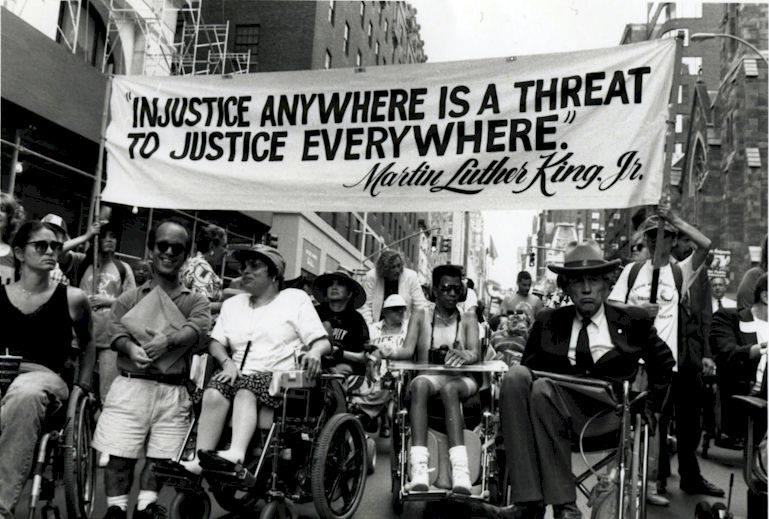For those of you willing and able to take on the mantle of change, I give you a curated selection of not-to-be-missed resources that will shape the foundation of your work. Presented below is a non-exhaustive and living list of voices I have found to be essential to the work of creating a just and equitable society.

Essential Reading
- Care Work: Dreaming Disability Justice
by Leah Lakshmi Piepzna-Samarasinha - A Disability History of the United States
by Kim E. Nielsen - Empire of Normality: Neurodiversity and Capitalism
by Robert Chapman
Essentials
These orgs will get you started in learning about disability justice directly from our community leaders and respected supporters.
DISABILITY JUSTICE AT WORK
20 Do-Able Ways To Make Any Project Better
01
Consider the POV represented in your work. Whose POV is it?
02
Consider whose experience is normalized or dominant in the work? Whose experience is non-dominant and/or marginalized.
03
Check body text, titles, headlines, captions, images, data sets, links, resources, and other components of your work for variety, unspoken assumptions, power dynamics, normalizing dominant perspectives, omission of pronouns, etc.
04
Check that inclusive representation is consistent throughout the work and not limited to particular sections.
05
Check for consistent treatment of a topic across perspectives (ex discussing ethnic groups or people with different conditions).
06
Ensure that you’re being clear about your presentation of perspectives vs. opinions.
07
Understand that patterns are powerful. Consider the influence of ongoing/systemic patterns vs. individual instances.
08
Check text, images, and linked resources for biases and stereotypes–positive or negative.
09
Check for assumptions and prejudices about an individual or group of people based on identity or characteristics.
10
Check for assumptions around language choices (such as self-identified, people-first, gender-neutral descriptors).
11
Check that your research and facts are cited and come from vetted sources inside the communities being discussed.
12
Consider if the org you’re representing would support your work if it was picked up or discussed in the media.
13
Choose appropriate options for edits: minor unsupported changes, supported changes, or elimination.
14
For events, ensure basic accessibility for a broader range of people is present at every event – physical and virtual — in multiple communication styles and alternate formats. Offer monitored contact info and invitations for requests that actually are answered.
15
Understand that accessibility needs may conflict at any time and change over time and that people often have multiple disabilities, not just the one you may be aware of.
16
Actively remove inspiration porn from your communications.
17
Actively dismantle the notions of “overcoming” disability and that disability equates to illness and/or misery.
18
Eliminate communication that infantilizes disabled people.
19
Challenge your biases around personal value (Who is “suffering” most? Whose life has more value?)
20
Check for and call out performative and tokenistic allyship.






